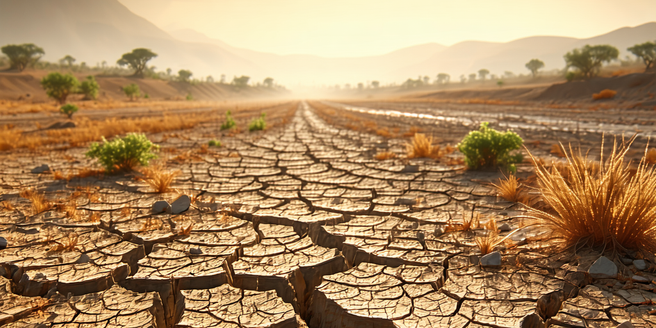
Understanding Drought: Definitions and Classifications
Drought is a complex, multifaceted phenomenon that lacks a universally accepted definition. Typically, it refers to an extended period of deficient rainfall relative to the statistical multi-decadal average for a region. Droughts are classified based on their characteristics and impacts. Meteorological drought outlines deficiencies in precipitation, while agricultural drought links to soil moisture deficits affecting crop production. Hydrological drought involves reduced water supply manifesting in streams, reservoirs, and groundwater levels, whereas socio-economic drought associates these factors with human commodities‘ demand and supply imbalances. Clarity in definitions aids policymakers and scientists to formulate timely interventions to manage and plan for drought contingencies effectively. As climate variability intensifies, understanding these categorizations becomes crucial to adapting to longer-duration and more severe drought events globally.
Historical Perspectives on Global Drought Trends
Historical data reveals significant shifts in global drought patterns over centuries. The 20th century saw major droughts that reshaped economies and environments, from the Dust Bowl in the United States to prolonged dry periods in Sub-Saharan Africa. Examination of paleoclimate records indicates that natural climate variability has historically influenced drought trends. However, the advent of anthropogenic factors over the last century has likely exacerbated drought frequency and intensity. Researchers now emphasize the need for assessing these historic patterns to forecast future drought risks better. Combining tree ring data, ice cores, and sediment records, scientists attempt to reconstruct past climate interactions. Understanding these historical drought dynamics is vital for future predictive models and developing effective drought management strategies.
The Role of Climate Systems in Drought Formation
Climate systems play a central role in determining drought occurrences and intensity. Large-scale atmospheric circulation patterns, such as El Niño and La Niña, significantly influence global precipitation distributions. During El Niño events, some regions may experience extreme rainfall, while others suffer from severe drought. The Intertropical Convergence Zone and subtropical high-pressure systems also shift in response to climate changes, altering precipitation landscapes. Further complicating the scenario, anthropogenic climate change is suspected to modify these systems’ dynamics, potentially intensifying existing drought conditions. Through improved climate modeling and observational tools, scientists aim to unravel these complex interactions. This understanding is key to predicting drought patterns, offering insights for developing more efficient water management and agricultural practices.
Regional Impacts of Drought on Agriculture and Livelihoods
Droughts have profound impacts on regional agriculture and livelihoods, often leading to crop failures and food insecurity. In areas heavily dependent on rainfall, like parts of Africa and Asia, drought can devastate local economies and lead to humanitarian crises. Farmers experience declines in productivity, while livestock shortages endanger food supply chains and elevate prices. The socioeconomic ripple effects extend to increased malnutrition and poverty levels among rural communities. As climate change heightens drought risks, these effects become increasingly acute. Adaptation measures, such as drought-resistant crop varieties and efficient irrigation practices, are essential to mitigate impacts. Policymakers are called to integrate resilience strategies within agricultural planning to sustain livelihoods amid evolving climatic challenges.
Mitigation Strategies and Adaptive Solutions for Drought Management
Effective drought management requires a multifaceted approach integrating both mitigation strategies and adaptive solutions. These strategies aim to reduce vulnerability and enhance resilience against drought impacts. Water conservation techniques, such as rainwater harvesting and efficient irrigation systems, are pivotal in reducing water stress. Moreover, collaborative efforts between governments, NGOs, and local communities are essential in crafting viable and long-lasting solutions. Additionally, adopting drought-resistant crops and improving soil management practices can sustain agricultural productivity during dry spells. On a broader scale, policies focused on sustainable water resource management and climate-smart agriculture play crucial roles. Encouraging community participation and public awareness campaigns also foster local-level adaptive capacities. As climate change exacerbates drought conditions, investing in innovative technologies and robust data analytics becomes vital for informed decision-making and long-term planning.
